History

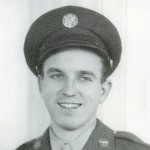 The mind of a soldier, in any branch of the service, is a mind that many of us do not understand. They go into situations that would send most of us running for the nearest hole to hide in, and then…when they write home or call home, they make light of the things they are doing…if they tell their family about their missions at all, because they don’t want to worry their loved ones. Often, if the family finds out about the missions they were on at all, it is years later. Maybe it is that they had to wrap their own minds around the things they had done, before they could tell anyone else about it. My dad, Allen Spencer was that way. In the letters he wrote home to his family, and especially his mother, his words were always very upbeat, very careful not to say the wrong things…things that might make them fear for his life, more than they already did. My nephew, Allen Spencer Beach, my dad’s namesake, is much like his grandfather in that way.
The mind of a soldier, in any branch of the service, is a mind that many of us do not understand. They go into situations that would send most of us running for the nearest hole to hide in, and then…when they write home or call home, they make light of the things they are doing…if they tell their family about their missions at all, because they don’t want to worry their loved ones. Often, if the family finds out about the missions they were on at all, it is years later. Maybe it is that they had to wrap their own minds around the things they had done, before they could tell anyone else about it. My dad, Allen Spencer was that way. In the letters he wrote home to his family, and especially his mother, his words were always very upbeat, very careful not to say the wrong things…things that might make them fear for his life, more than they already did. My nephew, Allen Spencer Beach, my dad’s namesake, is much like his grandfather in that way.
When Allen joined the Navy in 2009, it was to be part of the Naval Air Force. Part of his training was parachuting from a plane. At some point in his training, Allen injured his foot, and while the injury itself would not have stopped him from continuing in his chosen field, it delayed training long enough so that he wouldn’t be able to catch up with his class. It was at this point that Allen decided to become a medic. All of that information was known to most of his family at that time. It was certain parts of Allen’s work after that time that was only known to his family a number of years later. After the 7.0 earthquake that occurred in Haiti on January 12, 2010, Allen was one of the soldiers who was sent in to assist. I think most of us saw pictures of the devastation there, and the loss of life, but I seriously doubt that the news media showed us some of the worst parts of the devastation. It would be too much for many people to bare. I’m sure that is why Allen, like his grandfather, couldn’t tell his mother everything he did or saw. He had to process it himself, and put enough time between the event and his mother’s knowledge of it, so that hopefully she would not worry too much. I also have to wonder if his experience in Haiti is what made him decide to become a medic after his foot injury.
My sister, Caryl Reed, also found out, after the fact, that at one point, her son, Allen was training to be a medic for the Marines. Had he been needed, Allen would have become a medic on the front lines in a war zone. Here again, Allen knew that there needed to be enough time between the event and his mother’s knowledge of it, so she would not have nightmares. When she found out about that, all my sister could think was, “Thank the Lord that he didn’t have to go.” It was a mother’s second worst nightmares…the first being that her son actually goes to the front lines. A soldier has to push their own fear down as deep as they can, and make light of things with their loved ones, because they can imagine the anguish for their family, if they knew that truth…that they 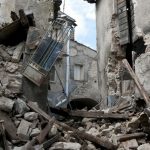
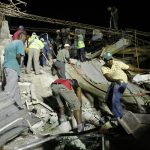 are in situations that really scare them, and they have no control over it. It is the experiences we live that help us to decide the direction our life will take. For Allen, what began as a career as maybe a pilot, has changed to a career in several different areas of medicine. From corpsman, to training as a field medic, to studying to be a hospital administrator. Allen left active duty in 2014, and lives in Washington DC, while his wife, Gabby finishes her service, and he finishes his studies. I know he will have a bright future. Today is Allen’s birthday. Happy birthday Allen!! Have a great day!! We love you!!
are in situations that really scare them, and they have no control over it. It is the experiences we live that help us to decide the direction our life will take. For Allen, what began as a career as maybe a pilot, has changed to a career in several different areas of medicine. From corpsman, to training as a field medic, to studying to be a hospital administrator. Allen left active duty in 2014, and lives in Washington DC, while his wife, Gabby finishes her service, and he finishes his studies. I know he will have a bright future. Today is Allen’s birthday. Happy birthday Allen!! Have a great day!! We love you!!
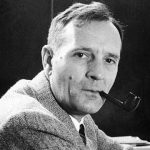
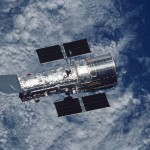 It is so easy to focus on our own little planet, or our own little space, but the reality is that outside of our atmosphere, there is a huge space that makes us look like a speck of dust…if that. In centuries past, people could see the sun and the stars, and I suppose they considered the fact that there might be something else out there, but since they really had no way of viewing it better than using the naked eye, they just thought that it was what it was…somewhat like a curtain with holes poked into it, and they really didn’t ever expect to see anything more. Still, somewhere along the way, someone thought it might be possible to see further into the sky that just the few stars that were visible. Inventions came about to aid the people in seeing into the great beyond.
It is so easy to focus on our own little planet, or our own little space, but the reality is that outside of our atmosphere, there is a huge space that makes us look like a speck of dust…if that. In centuries past, people could see the sun and the stars, and I suppose they considered the fact that there might be something else out there, but since they really had no way of viewing it better than using the naked eye, they just thought that it was what it was…somewhat like a curtain with holes poked into it, and they really didn’t ever expect to see anything more. Still, somewhere along the way, someone thought it might be possible to see further into the sky that just the few stars that were visible. Inventions came about to aid the people in seeing into the great beyond.
One man who had a vision to be able to see what was out there, was Edwin Hubble. Edwin wanted to learn about space from the time he was a young boy. He said, “I knew that even if I were second or third rate, it was astronomy that mattered.” He knew that he simply couldn’t do anything else. That kind of 
 determination makes a person great, and he was determined. Hubble’s work was something his father didn’t understand, and didn’t want him to do, in fact making him promise to be a lawyer. Hubble tried, but his heart just wasn’t in it. He also worked as a teacher of Spanish, Physics, Mathematics, and coached basketball. His popularity as a teacher is recorded in the school yearbook dedicated to him: “To our beloved teacher of Spanish and Physics, who has been a loyal friend to us in our senior year, ever willing to cheer and help us both in school and on the field, we, the class of 1914, lovingly dedicate this book.”
determination makes a person great, and he was determined. Hubble’s work was something his father didn’t understand, and didn’t want him to do, in fact making him promise to be a lawyer. Hubble tried, but his heart just wasn’t in it. He also worked as a teacher of Spanish, Physics, Mathematics, and coached basketball. His popularity as a teacher is recorded in the school yearbook dedicated to him: “To our beloved teacher of Spanish and Physics, who has been a loyal friend to us in our senior year, ever willing to cheer and help us both in school and on the field, we, the class of 1914, lovingly dedicate this book.”
While Edwin Hubble’s father may have thought his son had made a terrible mistake, and that he was even one can short of a six-pack, Edwin Hubble knew that there was more to see out there, and he simply couldn’t sit idly by and miss God’s big show. In October 1923 he spotted what he first thought was a nova star flaring up dramatically in the M31 “nebula” in the constellation of Andromeda. After careful examination of photographic plates of the same area taken previously by other astronomers, including his greatest scientific rival, Harlow 
 Shapley, who thought that the Milky Way was the end of the universe, he realized that it was a Cepheid star. On December 29, 1924, all of his hard work came to fruition, when he made another startling find…all galaxies seemed to be receding from us with velocities that increased in proportion to their distance from us…a relationship now known as Hubble’s Law. On this day, December 30, 1924, Edward Hubble was finally able to make the announcement that would make his a household name…that the universe was not static, but ever expanding and that there were many other galaxies out there.
Shapley, who thought that the Milky Way was the end of the universe, he realized that it was a Cepheid star. On December 29, 1924, all of his hard work came to fruition, when he made another startling find…all galaxies seemed to be receding from us with velocities that increased in proportion to their distance from us…a relationship now known as Hubble’s Law. On this day, December 30, 1924, Edward Hubble was finally able to make the announcement that would make his a household name…that the universe was not static, but ever expanding and that there were many other galaxies out there.
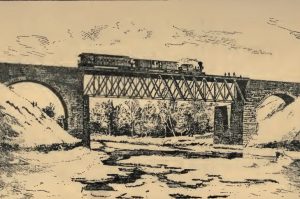 Through the centuries, new designs were developed to build things we needed. As the railroad moved across the nation, track laying came across deep gorges and flat plains. Of course, the flat plains were easy to deal with, and trains could simply go around any hills in the area, but the rivers and gullies were a bigger problem. They needed bridges, and so Charles Collins and Amasa Stone jointly designed a bridge to be used at Ashtabula, Ohio. It was the first Howe-type wrought iron truss bridge built. Collins was worried about the bridge, thinking that it was “too experimental” and needed further evaluation. Nevertheless, higher powers prevailed, and the bridge was built. Collins had been right to be concerned. The bridge lasted just 11 years before it collapsed.
Through the centuries, new designs were developed to build things we needed. As the railroad moved across the nation, track laying came across deep gorges and flat plains. Of course, the flat plains were easy to deal with, and trains could simply go around any hills in the area, but the rivers and gullies were a bigger problem. They needed bridges, and so Charles Collins and Amasa Stone jointly designed a bridge to be used at Ashtabula, Ohio. It was the first Howe-type wrought iron truss bridge built. Collins was worried about the bridge, thinking that it was “too experimental” and needed further evaluation. Nevertheless, higher powers prevailed, and the bridge was built. Collins had been right to be concerned. The bridge lasted just 11 years before it collapsed.
On December 28, 1876, a Lake Shore and Michigan Southern Railway train…the Pacific Express left New York. It struggled along through the drifts and the blinding storm. The train was pulling into Ashtabula, Ohio, shortly before 8:00pm on December 29, 1876, several hours behind schedule. The eleven cars were a heavy burden to the two engines. The leading locomotive broke through the drifts beyond the ravine, and rolled on across the bridge at Ashtabula at less than ten miles an hour. The head lamp could barely be seen because the air was thick with the driving snow. The leading engine reached solid ground, and the engineer had just given it steam…when something in the undergearing of the bridge snapped.
What followed was a horror beyond horrors…not only for the victims, but for the rescuers as well…maybe even more so for the rescuers. As the bridge crumbled beneath the weight of the train, the train and its 159 passengers fell 70 feet into the river below. More than 90 people, passengers and crew, were killed when the train hit the river and ignited into a huge ball of flames. Only the lead engine escaped the fall. As the bridge fell, the engineer gave it a quick head of steam, which tore the draw head from its tender, and the liberated engine shot forward and buried itself in the snow. The engineer escaped with a broken leg. The proportions of the Ashtabula horror are still only approximately known. Daylight, brought with it the opportunity to find and count the saved. It also revealed the fact that two out of every three passengers on the train were lost. Of the 160 passengers who the injured conductor reports as having been on board, fifty nine were found or accounted for as surviving. The remaining 100, burned to ashes or shapeless lumps of charred flesh, were lying under the ruins of the bridge and train. Every possible element of horror was there. First came the crash of the bridge, the agonizing moments of suspense as the seven laden cars plunged down their fearful leap to the icy riverbed. Then the fire, that devoured all that had been left alive by the crash. The water that gurgled up from under the broken ice brought with it another form of death. And finally, the biting blast of freezing air filled with snow, that froze those who had escaped the water and fire.
For the rescuers, the horror had just begun. I can’t think of anything worse than seeing those bodies after they were horribly mangled, drowned, and burned…some beyond recognition, some completely cremated. The number of persons killed cannot be accurately stated, because it is not known exactly how many there were on the train. It is supposed that some of the bodies were entirely consumed in the flames, as well. The official list of those killed and those who have died of their injuries, gives the number as fifty five, but it is suspected to be somewhat higher. There is no death list to report…and in fact, there can be none. There are no remains that can ever be identified. The three charred, shapeless lumps recovered were burned beyond recognition. For the rest, there are piles of white ashes in which were found the crumbling particles of bones. In other places masses of black, charred debris, half under water, which may contain fragments of bodies, but nothing that resembled a human body. It is thought that there may have been a few corpses under the ice, as there were women and children who jumped into the water and sank, but none have been recovered. Periodically, as people began looking for people that were missing around the country, and they were able to place them, as possibly on the train, more supposed victims have been identified…at least there is the possibility that they were a victim.
The Ashtabula, Ohio Railroad Disaster, often referred to simply as the Ashtabula Disaster or the Ashtabula Horror, was one of the worst railroad disasters in American history. The event occurred just 100 yards from the railroad station at Ashtabula, Ohio. It’s topped only by the Great Train Wreck of 1918 in Nashville, Tennessee. Charles Collin, the chief engineer, who knew as few men did the defects of that bridge, but was powerless to repair them, had been listening for this very crash for years. Collins, locked himself in his bedroom and shot himself while the inquest was in progress rather than tell the world all he believed he knew. Collins was found 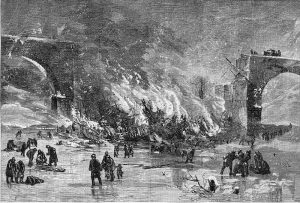 dead in his bedroom of a gunshot wound to the head. He had tendered his resignation to the Board of Directors the previous Monday. Collins was believed to have committed suicide out of grief and feeling partially responsible for the tragic accident, however, a police report at the time suggested the wound had not been self inflicted. Documents discovered in 2001 and an examination of Collins’ skull suggest that he had indeed been murdered. Amasa Stone committed suicide seven years later after experiencing financial difficulties with some foundries he had interests in, suffering from severe ulcers that kept him from sleeping, and scorn from the public over the disaster.
dead in his bedroom of a gunshot wound to the head. He had tendered his resignation to the Board of Directors the previous Monday. Collins was believed to have committed suicide out of grief and feeling partially responsible for the tragic accident, however, a police report at the time suggested the wound had not been self inflicted. Documents discovered in 2001 and an examination of Collins’ skull suggest that he had indeed been murdered. Amasa Stone committed suicide seven years later after experiencing financial difficulties with some foundries he had interests in, suffering from severe ulcers that kept him from sleeping, and scorn from the public over the disaster.
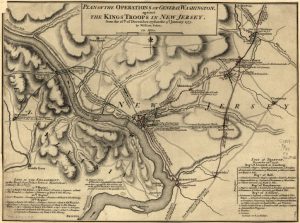 The year was 1776, and it was Christmas Day, but for the men with George Washington, it was not a day of celebration…not exactly anyway. They were in the middle of fighting a war, and the fighting didn’t just stop because it was Christmas, not this year anyway. This was to be an unusual Christmas as far as wartime Christmases went. In 1776, it was difficult to fight a war in the wintertime, because the slower modes of travel. Most times in a war, the armies took the Winter off from warring, but this army was not laying up for the Winter. This war would continue on…no matter what the weather was like.
The year was 1776, and it was Christmas Day, but for the men with George Washington, it was not a day of celebration…not exactly anyway. They were in the middle of fighting a war, and the fighting didn’t just stop because it was Christmas, not this year anyway. This was to be an unusual Christmas as far as wartime Christmases went. In 1776, it was difficult to fight a war in the wintertime, because the slower modes of travel. Most times in a war, the armies took the Winter off from warring, but this army was not laying up for the Winter. This war would continue on…no matter what the weather was like.
Things looked bad that year. The Continental Army had suffered a series of defeats in their battle against the British oppression. After some successful maneuvers, Colonel Henry Knox came to the attention of General George Washington who worked to place him in overall command to the Continental Army. Under his command, the Continentals brought 18 cannon over the river…3 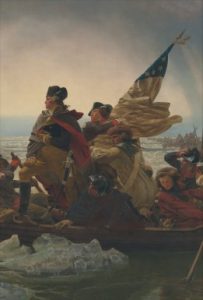 Pounders, 4 Pounders, some 6 Pounders, horses to pull the carriages, and enough ammunition for the coming battle. The 6 Pounders, weighing as much as 1,750 pounds were the most difficult to transport to the far side of the river. But in the end all the trouble of moving this large artillery train to Trenton proved its worth. Knox would place the bulk of his artillery at the top of the town where its fire commanded the center of Trenton.
Pounders, 4 Pounders, some 6 Pounders, horses to pull the carriages, and enough ammunition for the coming battle. The 6 Pounders, weighing as much as 1,750 pounds were the most difficult to transport to the far side of the river. But in the end all the trouble of moving this large artillery train to Trenton proved its worth. Knox would place the bulk of his artillery at the top of the town where its fire commanded the center of Trenton.
The plan devised by Knox and Washington was to conduct a surprise attack upon a Hessian garrison of roughly 1,400 soldiers located in and around Trenton, New Jersey. Washington hoped that a quick victory at Trenton would bolster sagging morale in his army and encourage more men to join the ranks of the Continentals in the coming new year. After several councils of war, General George Washington set the date for the river crossing for Christmas night 1776. It was an unprecedented plan, because the expectation was always that the armies would hold up somewhere for the winter. No one had attacked in winter before, and especially on Christmas. George Washington led 2,400 troops on a daring nighttime crossing of the icy Delaware River. Stealing into New Jersey, on December 26 the Continental forces launched the surprise attack on Trenton.
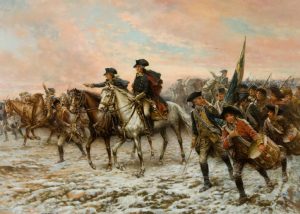 The gamble paid off. Many of the Hessians were still disoriented from the previous night’s holiday bender, and colonial forces defeated them with minimal bloodshed. While Washington had pulled off a shock victory, his army was unequipped to hold the city and he was forced to re-cross the Delaware that same day…with nearly 1,000 Hessian prisoners in tow. Washington would go on to score successive victories at the Battles of the Assunpink Creek and Princeton, and his audacious crossing of the frozen Delaware served as a crucial rallying cry for the beleaguered Continental Army. The Revolutionary War would be won by the Continental Army of course, and the rules of warfare changed forever.
The gamble paid off. Many of the Hessians were still disoriented from the previous night’s holiday bender, and colonial forces defeated them with minimal bloodshed. While Washington had pulled off a shock victory, his army was unequipped to hold the city and he was forced to re-cross the Delaware that same day…with nearly 1,000 Hessian prisoners in tow. Washington would go on to score successive victories at the Battles of the Assunpink Creek and Princeton, and his audacious crossing of the frozen Delaware served as a crucial rallying cry for the beleaguered Continental Army. The Revolutionary War would be won by the Continental Army of course, and the rules of warfare changed forever.

 As I was contemplating the Christmas Day activities to come, my mind wandered back to Christmases of my past. As a child, I remember waking up very early, with struck orders not to go out into the living room until our parents were awake. It seemed like a lifetime before they woke up. It wasn’t, of course, but in my youthful mind, it felt that way nevertheless. Christmas was a day to stay home. After the presents were opened, the cooking began. Of course, the turkey had been cooking for a while by then…another sign that Mom and Dad weren’t really still sleeping when we were trying to wake them up. My sisters and I had the rest of the morning to play with our new toys, and help out in the kitchen. It didn’t matter if it was snowing outside or not, because we had no place to go…the day was ours. I miss those carefree, slowed down, stay-at-home Christmases sometimes.
As I was contemplating the Christmas Day activities to come, my mind wandered back to Christmases of my past. As a child, I remember waking up very early, with struck orders not to go out into the living room until our parents were awake. It seemed like a lifetime before they woke up. It wasn’t, of course, but in my youthful mind, it felt that way nevertheless. Christmas was a day to stay home. After the presents were opened, the cooking began. Of course, the turkey had been cooking for a while by then…another sign that Mom and Dad weren’t really still sleeping when we were trying to wake them up. My sisters and I had the rest of the morning to play with our new toys, and help out in the kitchen. It didn’t matter if it was snowing outside or not, because we had no place to go…the day was ours. I miss those carefree, slowed down, stay-at-home Christmases sometimes.
When I got married, there were suddenly two families to spend Christmas…and every other holiday, with. Things got hectic very fast. We found ourselves running from one house to the other in celebration of the day. Yes, there was plenty of stress, but there really was celebration too, because Christmas is a day of celebration, both in the spiritual and secular versions. Families worked together to make for an easy transition from one house to the other, even though each one wished they could have had a little bit more time with us. Finally, at the end of a very long day, wonderful as it was, we dragged ourselves back home, and figured that there was always tomorrow to stay home and let the kids play with all of their new things.
When our girls got married a whole new facet was added to the Christmas/holiday mix. Not only was there still 
 my family and Bob’s, but now we had Kevin’s and Travis’ families. The holidays became almost chaotic. Still, it was about family, and that was what mattered. Our families, their families, one big happy family. What I learned from this time spent reminiscing is that whatever Christmas or the other holidays are to your family, that is the thing that matters, because after the real reason for the Christmas season…the birth of our Lord and Saviour, Jesus Christ…family is the next thing in the line of the most important things in life. Merry Christmas to all of my dear family, and everyone everywhere.
my family and Bob’s, but now we had Kevin’s and Travis’ families. The holidays became almost chaotic. Still, it was about family, and that was what mattered. Our families, their families, one big happy family. What I learned from this time spent reminiscing is that whatever Christmas or the other holidays are to your family, that is the thing that matters, because after the real reason for the Christmas season…the birth of our Lord and Saviour, Jesus Christ…family is the next thing in the line of the most important things in life. Merry Christmas to all of my dear family, and everyone everywhere.
 Imagine living in a country where you could only go places and do things that the government allowed you to. Communist countries are that way, but in East Berlin things had taken a much more sinister turn. Throughout the 1950s and into the early 1960s, thousands of people from East Berlin crossed over into West Berlin to reunite with families and escape communist repression. The Soviet Union had rejected East Germany’s original request to build the wall in 1953, but with defections through West Berlin reaching 1,000 people a day by the summer of 1961, Soviet leader Nikita Khrushchev finally relented. The residents of Berlin awoke on the morning of August 13, 1961, to find barbed wire fencing had been installed on the border between the city’s east and west sections. Days later, East Germany began to fortify the barrier with concrete. Construction began on August 12, 1961. The Berlin Wall was actually two walls. The 27 mile portion of the barrier separating Berlin into east and west consisted of two concrete walls between which was a “death strip” up to 160 yards wide that contained hundreds of watchtowers, miles of anti-vehicle trenches, guard dog runs, floodlights and trip-wire machine guns. Overnight, people who had family on the other side of Berlin were no longer able to see them. There was no recourse, and no warning. At first people could see their loved ones across the fence, but when the walls went up that ended too.
Imagine living in a country where you could only go places and do things that the government allowed you to. Communist countries are that way, but in East Berlin things had taken a much more sinister turn. Throughout the 1950s and into the early 1960s, thousands of people from East Berlin crossed over into West Berlin to reunite with families and escape communist repression. The Soviet Union had rejected East Germany’s original request to build the wall in 1953, but with defections through West Berlin reaching 1,000 people a day by the summer of 1961, Soviet leader Nikita Khrushchev finally relented. The residents of Berlin awoke on the morning of August 13, 1961, to find barbed wire fencing had been installed on the border between the city’s east and west sections. Days later, East Germany began to fortify the barrier with concrete. Construction began on August 12, 1961. The Berlin Wall was actually two walls. The 27 mile portion of the barrier separating Berlin into east and west consisted of two concrete walls between which was a “death strip” up to 160 yards wide that contained hundreds of watchtowers, miles of anti-vehicle trenches, guard dog runs, floodlights and trip-wire machine guns. Overnight, people who had family on the other side of Berlin were no longer able to see them. There was no recourse, and no warning. At first people could see their loved ones across the fence, but when the walls went up that ended too.
For almost 2½ years those on one side of the wall were lost to those on the other side of the wall. What the Communist regime didn’t anticipate was the fact that people would still find a way to escape. There were 39 deaths at the Berlin Wall between 1961 and 1963, and a total of 139 between 1961 and the wall’s demolition in 1989. That might not seem like so many, but when you take into account the fact that the people inside East Berlin were so closely watched, that it was almost impossible to get to supplies they needed to plan and carry out their escape attempt. Nevertheless, some people did make it safely across. No one knows for sure exactly how many people reached the western part, but some estimates claim that 5,000 East Germans reached West Berlin via the Wall. Men, women and children snuck through checkpoints, hid in vehicles and tunneled under  the concrete. They used hot air balloons, diverted the train, crossed the river on an air mattress, by swimming, and even by zip line and tight rope. These people really wanted their freedom.
the concrete. They used hot air balloons, diverted the train, crossed the river on an air mattress, by swimming, and even by zip line and tight rope. These people really wanted their freedom.
Finally, on December 20th through 26th or 1963, the Communist regime decided that if they issued 1 day passes to those in West Berlin, maybe it would stop the escape attempts. The East Berliners were not allowed to leave, but the West Berliners could come in and see friends and family members. I can only imagine how the people from West Berlin felt. They wanted to go and see their friends and family, but would they be allowed back out, or was this just a trap? Nevertheless, it was Christmastime, and it had been so long since they had seen them. So, nearly 4,000 West Berliners crossed into East Berlin to visit their relatives. It was all part of an agreement reached between East and West Berlin, over 170,000 passes were eventually issued to West Berlin citizens, each pass allowing a one day visit to communist East Berlin for the Christmas (Passierscheinregelung) season that year.
The day was one filled with moments of poignancy and propaganda. Tears, laughter, and other outpourings of emotions characterized the reunions that took place as mothers and fathers, sons and daughters met again. They were so happy, if only for a short time. Cold War tensions were mixed in too, however. Loudspeakers in East Berlin inundated visitors with the news that they were now in “the capital of the German Democratic Republic,” a political division that most West Germans refused to accept. Visitors were also given a brochure that explained that the wall was built to “protect our borders against the hostile attacks of the imperialists.” They were told of how the decadent western culture, including “Western movies” and “gangster stories,” were flooding into East Germany before the wall sealed off such dangerous trends, and that made it “necessary” to build the wall. West Berlin newspapers berated the visitors for being “pawns” of East German propaganda. Editorials argued that the communists would use these visits to gain West German acceptance of a permanent division of Germany. The visits, and the high-powered rhetoric that surrounded them, reminded everyone that the Cold 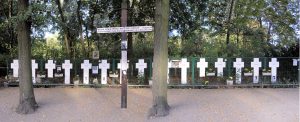 War involved very human, often quite heated, emotions. East Berlin allowed these similar and very limited arrangements in 1964, 1965 and 1966. In 1971, with the Four Power Agreement on Berlin, agreements were finally reached to allow West Berliners to apply for visas to enter East Berlin and East Germany regularly, however, East German authorities could still refuse to honor the entry permits. Finally in 1989, at President Ronald Reagan’s insistence, the Berlin Wall came down, and this inhumane treatment of the East German people ended.
War involved very human, often quite heated, emotions. East Berlin allowed these similar and very limited arrangements in 1964, 1965 and 1966. In 1971, with the Four Power Agreement on Berlin, agreements were finally reached to allow West Berliners to apply for visas to enter East Berlin and East Germany regularly, however, East German authorities could still refuse to honor the entry permits. Finally in 1989, at President Ronald Reagan’s insistence, the Berlin Wall came down, and this inhumane treatment of the East German people ended.
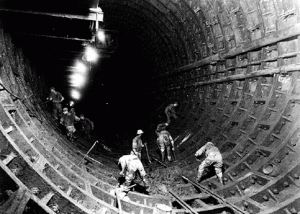 Living in New Jersey, does not necessarily mean that people work or shop in New Jersey. Since Manhattan is just across the Hudson River, many people work and shop there…who wouldn’t, given the chance. I suppose that at some point it was decided that there might soon be too many bridges over the river, and maybe a tunnel under it could be built. The first known underwater tunnel to be built was the Thames Tunnel, built beneath the River Thames in London, connecting Rotherhithe and Wapping. It was built between 1825 and 1843 using Marc Isambard Brunel’s and Thomas Cochrane’s newly invented tunneling shield technology, by Brunel and his son Isambard Kingdom Brunel. So the idea was not new, and in fact, not even new to New York City. The Port Authority had acquired the Holland Tunnel in 1930, and soon after New York and New Jersey authorized the agency to proceed with its plan to build what was then called the Midtown Hudson Tunnel or the Midtown Vehicular Tunnel. Creating a 1.5-mile-long structure, even above ground, would be no small accomplishment, but to build it under a riverbed was a monumental task. Hundreds of huge iron rings, each weighing 21 tons, had to be assembled and bolstered together on site to form the lining of the tunnel. At some point it was decided that Midtown Vehicular Tunnel was not grand enough…so in the spirit of patriotism they named it the Lincoln Tunnel, because of the George Washington Bridge. On this day, December 22, 1937 the 8,216 foot center tube opened in 1937, followed by the 7,482 foot north tube in 1945. The 8,006 foot south tube was the last to open, in 1957.
Living in New Jersey, does not necessarily mean that people work or shop in New Jersey. Since Manhattan is just across the Hudson River, many people work and shop there…who wouldn’t, given the chance. I suppose that at some point it was decided that there might soon be too many bridges over the river, and maybe a tunnel under it could be built. The first known underwater tunnel to be built was the Thames Tunnel, built beneath the River Thames in London, connecting Rotherhithe and Wapping. It was built between 1825 and 1843 using Marc Isambard Brunel’s and Thomas Cochrane’s newly invented tunneling shield technology, by Brunel and his son Isambard Kingdom Brunel. So the idea was not new, and in fact, not even new to New York City. The Port Authority had acquired the Holland Tunnel in 1930, and soon after New York and New Jersey authorized the agency to proceed with its plan to build what was then called the Midtown Hudson Tunnel or the Midtown Vehicular Tunnel. Creating a 1.5-mile-long structure, even above ground, would be no small accomplishment, but to build it under a riverbed was a monumental task. Hundreds of huge iron rings, each weighing 21 tons, had to be assembled and bolstered together on site to form the lining of the tunnel. At some point it was decided that Midtown Vehicular Tunnel was not grand enough…so in the spirit of patriotism they named it the Lincoln Tunnel, because of the George Washington Bridge. On this day, December 22, 1937 the 8,216 foot center tube opened in 1937, followed by the 7,482 foot north tube in 1945. The 8,006 foot south tube was the last to open, in 1957.
On average, the Lincoln Tunnel sees upwards of 120,000 cars passing through every day. It is one of the busiest roadways in the country. On the afternoon of September 8, 1953, the tunnel became famous when two men, who had attempted to rob a house in South Orange New Jersey were chased away by its residents. Their car’s license plate was relayed to the police. Peter Simon and John Metcalf escaped into the Lincoln Tunnel and were spotted by transit authorities upon entering. A car chase ensued amid the traffic through the tunnel. Police commandeered a delivery truck and fired shots at the getaway car as it swerved around other vehicles. In all 28 shots were fired, and the driver, Peter Simon, was shot in the head about three quarters of the way to the other side of the tunnel. The gunfight was reported by The New York Times the next morning.
The Hudson River current has historically stayed close to the edge of Lower Manhattan, but with the construction of Battery Park City, which juts out into the river, part of the current has been rerouted. Its new location brings it more toward the river’s center and it’s uncovering much of the soil lying on top of the walls and ceiling of the Tunnel. As of 2009, some parts of the tunnel’s walls have seen a soil coverage decrease of about 25%, making them far more susceptible to shifting or cracking in the coming years. Not good!!
The process of building the 1.5 mile tunnel was grueling. To support the cavities that the workers dug out, they  installed a series of 21 ton iron rings set into the walls. The workers who dug the tunnels, called sandhogs, had to use a series of airlocks to depressurize and re-pressurize their bodies while entering a new section of the tunnel. With no ventilation, the air in each pressurized section got stale quickly. The excavation involved digging, lining the walls with the rings, pouring cement into every crease and crack to the keep the water out, and finally they moved along to the next airlock. Clifford Holland, chief engineer and namesake of the Holland Tunnel, died of a heart attack at 41 years of age due to immense stress during the construction, as well as the growing toxicity of the air in the airlocks. The Lincoln Tunnel faired better, with no reported work-related deaths.
installed a series of 21 ton iron rings set into the walls. The workers who dug the tunnels, called sandhogs, had to use a series of airlocks to depressurize and re-pressurize their bodies while entering a new section of the tunnel. With no ventilation, the air in each pressurized section got stale quickly. The excavation involved digging, lining the walls with the rings, pouring cement into every crease and crack to the keep the water out, and finally they moved along to the next airlock. Clifford Holland, chief engineer and namesake of the Holland Tunnel, died of a heart attack at 41 years of age due to immense stress during the construction, as well as the growing toxicity of the air in the airlocks. The Lincoln Tunnel faired better, with no reported work-related deaths.
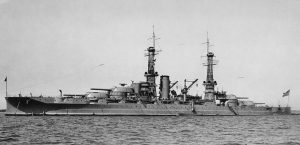 Most people know that the USS Arizona was one of the ships that was bombed when the Japanese attacked Pearl Harbor on December 7, 1941. The USS Arizona’s sinking took with it, 1,177 men…almost half of the total of 2,403 people killed at Pearl Harbor. The Arizona was one of 20 American ships and more than 300 airplanes lost that day. We know that the attack woke the sleeping giant that is the United States, and we joined World War II with the Allies to stop the tyranny that was Japan and later Germany and Italy. Most people know that the Allies were successful in World War II, and after four long years and the loss of over 400,000 lives, the war was over. There are a few facts about the USS Arizona that many people might not know, however.
Most people know that the USS Arizona was one of the ships that was bombed when the Japanese attacked Pearl Harbor on December 7, 1941. The USS Arizona’s sinking took with it, 1,177 men…almost half of the total of 2,403 people killed at Pearl Harbor. The Arizona was one of 20 American ships and more than 300 airplanes lost that day. We know that the attack woke the sleeping giant that is the United States, and we joined World War II with the Allies to stop the tyranny that was Japan and later Germany and Italy. Most people know that the Allies were successful in World War II, and after four long years and the loss of over 400,000 lives, the war was over. There are a few facts about the USS Arizona that many people might not know, however.
Twenty three sets of brothers died aboard USS Arizona. In all there were 37 confirmed pairs or trios of brothers assigned to the ship. Of the 77 men in those sets, 62 were killed. Only one full set of brothers survived. Kenneth and Russell Warriner survived because Kenneth was away at flight school in San Diego, and Russell, while badly wounded, lived. Also on board were father and son, Thomas Free and his son William who served and were killed aboard the Arizona that day. While no regulation exists, US officials discouraged siblings serving on the same ship after the Pearl Harbor attack. In addition to these men who died, the USS Arizona’s entire band, all 21 members, known as US Navy Band Unit (NBU) 22, were lost in the attack. Most of its members were up on deck preparing to play music for the daily flag raising ceremony when the attack began. They instantly moved to man their battle positions beneath the ship’s gun turret. It was the only time in American history that an entire military band died in action. In the years following the attack, and following the decision to leave the dead in the USS Arizona, it was decided that a memorial should be placed there. That is a known fact, but what I didn’t know was that in March 1961, Elvis Presley, who had recently finished a two year stint in the US Army, performed a benefit concert at 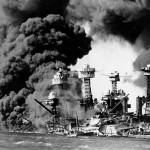
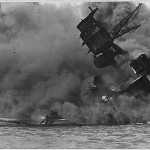 Pearl Harbor’s Block Arena that raised over $50,000. That was more than 10 percent of the USS Arizona Memorial’s final cost. The monument was officially dedicated on May 30, 1962.
Pearl Harbor’s Block Arena that raised over $50,000. That was more than 10 percent of the USS Arizona Memorial’s final cost. The monument was officially dedicated on May 30, 1962.
One of the most surprising facts about the Arizona, however, is related to the fuel. The day before the Pearl Harbor attack, the Arizona had taken on a full load of fuel…nearly 1.5 million gallons, because it was set to make a trip to the mainland later that month. When the Japanese bombers attacked, that fuel played a major part in the explosions and raging fire that followed the bombing. After the fires were put out, there were 500,000 gallons of fuel left in the ship. Now, 75 years later, the Arizona continues to spill up to 9 quarts of oil into the harbor each day. In the mid-1990s, concerns for the environment led the National Park Service to commission a series of site studies to determine the long term effects of the oil leakage. Some scientists have warned of a possible “catastrophic” eruption of oil from the wreckage, which they believe would cause extensive damage to the Hawaiian shoreline and disrupt US naval functions in the area. They continue to monitor the deterioration of the wreck site but are reluctant to perform extensive repairs or modifications due to the Arizona’s role as a “war grave.” In fact, the oil that often coats the surface of the water surrounding the ship has added an emotional gravity for many who visit the memorial and is sometimes referred to as the “tears of the Arizona” or “black tears.”
As surprising as that is, there is still one more fact that many people didn’t know. The bonds between the crewmembers of Arizona have lasted far beyond the loss of the ship on December 7, 1941. Since 1982, the US Navy has allowed survivors of USS Arizona to be interred in the ship’s wreckage upon their deaths. After a full military funeral at the Arizona memorial, the cremated remains are placed in an urn and then deposited by divers beneath one of the Arizona’s gun turrets. More than 30 Arizona crewmen who survived Pearl Harbor  have chosen the ship as their final resting place. Crewmembers who served on the ship prior to the attack may have their ashes scattered above the wreck site, and those who served on other vessels stationed at Pearl Harbor on December 7, 1941, may have their ashes scattered above their former ships. As of November 2011, only 18 of the 355 crewmen who survived the bombing of USS Arizona are known to be alive. I knew that the Pearl Harbor attack had a deep impact on the lives of the survivors, but I guess I didn’t fully understand that it was a life changing event, and it would never really leave them.
have chosen the ship as their final resting place. Crewmembers who served on the ship prior to the attack may have their ashes scattered above the wreck site, and those who served on other vessels stationed at Pearl Harbor on December 7, 1941, may have their ashes scattered above their former ships. As of November 2011, only 18 of the 355 crewmen who survived the bombing of USS Arizona are known to be alive. I knew that the Pearl Harbor attack had a deep impact on the lives of the survivors, but I guess I didn’t fully understand that it was a life changing event, and it would never really leave them.
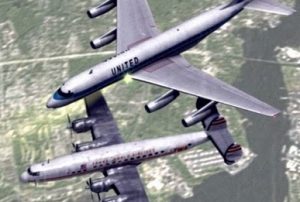
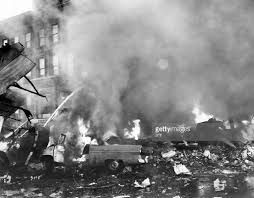 With the thousands of airplanes in the air at any moment, one might think that daily accidents would be common place, but in reality, air travel is actually very safe. Nevertheless, it is not without its tragedies. What tends to amaze me, however, is the fact that relatively few ever seem to crash in a city, even though the airports are usually very near cities. Still, there is not a perfect record of missing the cities, when it comes to plane crashes either, and when a plane crashes in a city, you know that the death toll will be higher, and more than likely will include people on the ground, who were just going about their day, completely unaware of the danger they were in.
With the thousands of airplanes in the air at any moment, one might think that daily accidents would be common place, but in reality, air travel is actually very safe. Nevertheless, it is not without its tragedies. What tends to amaze me, however, is the fact that relatively few ever seem to crash in a city, even though the airports are usually very near cities. Still, there is not a perfect record of missing the cities, when it comes to plane crashes either, and when a plane crashes in a city, you know that the death toll will be higher, and more than likely will include people on the ground, who were just going about their day, completely unaware of the danger they were in.
Such was the case on this day, December 16, 1960, in New York City, when two commercial airliners, a United 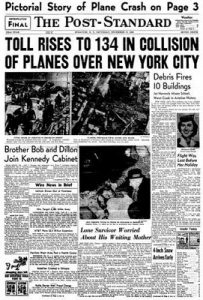 DC-8 from Chicago, that was heading to Idlewild Airport…now renamed John F Kennedy International Airport, in southern Queens, and a TWA Super Constellation from Dayton, Ohio that was heading to LaGuardia Airport in northern Queens, collided over the city, killing 134 people in the planes and on the ground. This remains the only such accident to occur over a major US city to this day. It was snowing that morning, and the United flight had been put into a holding pattern. Unfortunately, the pilot miscalculated the location of the pattern, the plane came directly into the path of the TWA flight, who was on approach to LaGuardia Airport. There were 128 people onboard the two planes, and all of them, except eleven year old Stephen Baltz were killed on impact. The boy would die from his injuries the next day, but he was lucid enough to give a brief account of the accident, saying that, “It looked like a picture out of a fairy book. Then all of a sudden there was an explosion. The plane started to fall and people started to scream. I held on to my seat and then the plane crashed.”
DC-8 from Chicago, that was heading to Idlewild Airport…now renamed John F Kennedy International Airport, in southern Queens, and a TWA Super Constellation from Dayton, Ohio that was heading to LaGuardia Airport in northern Queens, collided over the city, killing 134 people in the planes and on the ground. This remains the only such accident to occur over a major US city to this day. It was snowing that morning, and the United flight had been put into a holding pattern. Unfortunately, the pilot miscalculated the location of the pattern, the plane came directly into the path of the TWA flight, who was on approach to LaGuardia Airport. There were 128 people onboard the two planes, and all of them, except eleven year old Stephen Baltz were killed on impact. The boy would die from his injuries the next day, but he was lucid enough to give a brief account of the accident, saying that, “It looked like a picture out of a fairy book. Then all of a sudden there was an explosion. The plane started to fall and people started to scream. I held on to my seat and then the plane crashed.”
The TWA plane crashed onto Miller Field, a military airfield on Staten Island. The United flight, which was missing its right engine and part of a wing, came down in the middle of the Park Slope neighborhood of Brooklyn, narrowly missing Saint Augustine’s Academy. It hit an apartment building and the Pillar of Fire Church. Dozens of other buildings caught fire in the resulting explosion. Mrs Robert Nevin, who was sitting in a 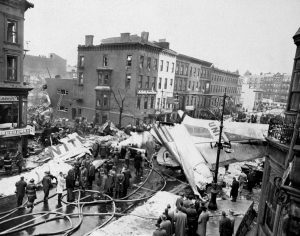
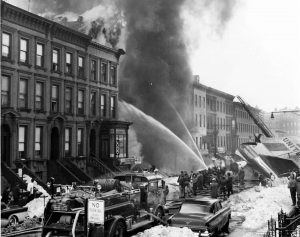 top floor apartment when the place crashed into her building, later said “The roof caved in and I saw the sky.” Six people on the ground died when the plane crashed, including the 90 year old caretaker of the church, Wallace Lewis, and two men who were selling Christmas trees nearby. Christmas presents carried by the plane’s passengers were strewn all over the streets. Firefighting efforts went on for nearly 72 hours because of the multiple fires.
top floor apartment when the place crashed into her building, later said “The roof caved in and I saw the sky.” Six people on the ground died when the plane crashed, including the 90 year old caretaker of the church, Wallace Lewis, and two men who were selling Christmas trees nearby. Christmas presents carried by the plane’s passengers were strewn all over the streets. Firefighting efforts went on for nearly 72 hours because of the multiple fires.

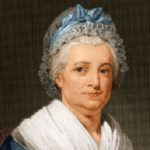 When we think of dinners with the President of the United States, we think of state dinners with tons of security, and massive pre-planning. Presidential dinners have changed distinctly since Washington’s day. The nation was much smaller for sure, and he could easily get together with all of his advisors and Congress in one place, I’m sure. In fact, George Washington was basically in uncharted waters. So, he decided that on Thursday evenings, he would have the brightest minds in the nation over for a casual dinner. At that time the nation’s capitol was still in New York City, so those casual dinners were never held in the White House. George Washington and his family lived in executive mansions in lower Manhattan, which was close to other governmental buildings in that era. While Washington entertained foreign dignitaries and other heads of state at public receptions on Tuesdays and Martha Washington regularly invited guests to their home on Fridays, Thursday evenings were reserved for formal dinners with congressional leaders, their wives and close personal friends of the Washingtons.
When we think of dinners with the President of the United States, we think of state dinners with tons of security, and massive pre-planning. Presidential dinners have changed distinctly since Washington’s day. The nation was much smaller for sure, and he could easily get together with all of his advisors and Congress in one place, I’m sure. In fact, George Washington was basically in uncharted waters. So, he decided that on Thursday evenings, he would have the brightest minds in the nation over for a casual dinner. At that time the nation’s capitol was still in New York City, so those casual dinners were never held in the White House. George Washington and his family lived in executive mansions in lower Manhattan, which was close to other governmental buildings in that era. While Washington entertained foreign dignitaries and other heads of state at public receptions on Tuesdays and Martha Washington regularly invited guests to their home on Fridays, Thursday evenings were reserved for formal dinners with congressional leaders, their wives and close personal friends of the Washingtons.
In reality, these dinners were elaborate affairs. They started promptly at 4:00pm, because Washington refused to wait for latecomers. I guess every president has his own idiosyncrasies. The parties numbered up to two dozen people, gathered around a table set with the Washington family silver and china. Unlike some state dinners, in which the President and his wife occupy the head of the table, Martha Washington preferred to sit in the middle of one side of the long table and President Washington sat directly across from her. The ends of the table were occupied by a secretary to help with the conversation and roast carving. The roast carving was necessary too, because there were a lot of roasts to be carved. The dinners were comprised of three courses, but that did no limit the selection. There would commonly be upwards of twenty different dishes in each course…all of which were brought to the table at the same time.
The various dishes were the finest that New York had to offer, and the guests were lavished with the exquisite meals. Manhattan was in the middle of New York City, but in 1700, it was still quite wild. The island had an assortment of venison, rabbit, and duck that were hunted for food. Oysters were abundant in the Hudson River. Jellies, dried fruits and nuts were served alongside, although you wouldn’t have seen potato or tomato dishes, because those foods were regarded as unfit for humans to eat in those days. Wine was drunk with dinner, although George Washington was said to prefer a tankard of ale over a glass of claret.
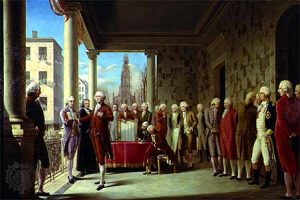
When dinner was over, Washington would raise a toast to the assembly, and then the ladies would retire to Martha’s drawing room for “coffee and civilized conversation.” The gentlemen would remain in the dining room, lingering over cigars and wine, but not for very long. The president only stayed another thirty minutes before joining the women in the drawing room. One of his personal secretaries would stay on in the dining room with the men to preside over political chats for another hour or so, until the company left and the Washingtons’ Thursday dinner was over…until the next week. George Washington passed away on this day, December 14, 1799.

